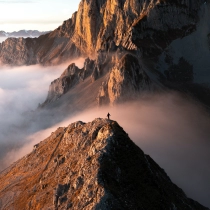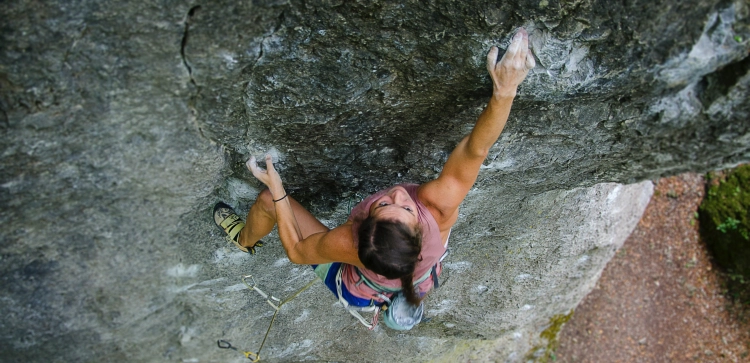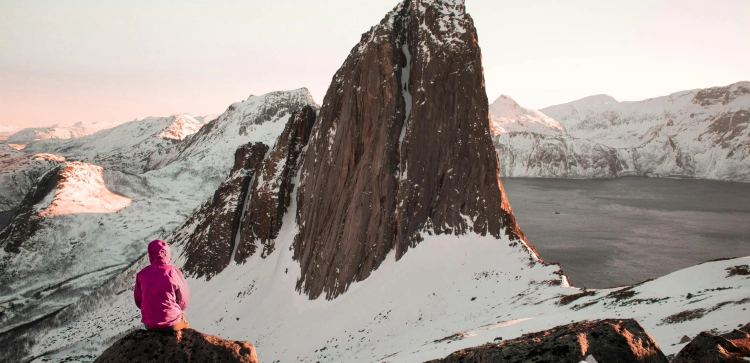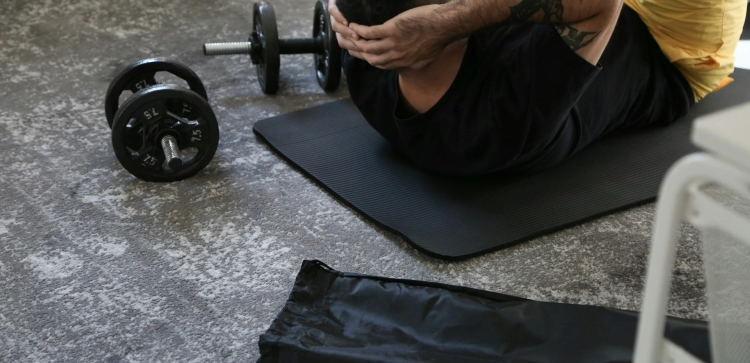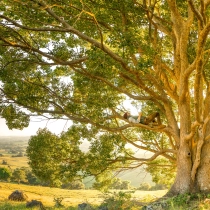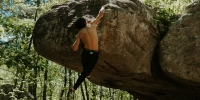Climbing Mental Mastery: Enhancing Focus, Mindfulness, And Resilience

Rock climbing is widely recognized as a physically demanding sport, yet its true challenges often lie beyond brute strength. To excel on the rock or in the gym, climbers require a profound mastery of their minds, encompassing unwavering focus, deep concentration, mindful presence, and unyielding mental resilience. These cognitive and emotional attributes are not merely supplementary; they are fundamental to navigating complex routes, managing inherent fears, learning from setbacks, and ultimately unlocking your full climbing potential. This comprehensive guide will explore the indispensable role of mental mastery in climbing, delve into practical techniques for enhancing concentration and mindfulness, and reveal strategies for cultivating the mental resilience needed to overcome any challenge the vertical world throws your way.
- The Indispensable Role Of Mental Focus In Climbing
- Cultivating Concentration And Mindfulness On The Wall
- The Role Of Mental Resilience In Overcoming Challenges
- Conclusion
- FAQ: Mental Focus, Mindfulness, And Resilience In Climbing
- What Is The Importance Of Mental Focus In Climbing?
- How Does Mindfulness Enhance Climbing Performance?
- What Is Mental Resilience In Climbing?
- How Can Proper Breathing Help With Mental Focus And Anxiety In Climbing?
- What Are Some Practical Ways To Build Mental Resilience For Climbing?
- Is Visualization Only For Physical Practice, Or Does It Help Mentally Too?
- How Can A Climber Avoid Overthinking On A Route?
- Why Is Learning From Setbacks Important For A Climber's Mental Game?
The Indispensable Role of Mental Focus in Climbing
Mental focus is the ability to direct and sustain attention on the immediate task at hand, blocking out distractions and irrelevant thoughts. In climbing, where precision and quick decision-making are paramount, mental focus is as critical as physical strength.
How Mental Focus Enhances Climbing Performance:
-
Precision and Efficiency: A focused mind allows for precise foot placements, accurate hand movements, and efficient body positioning. Every move becomes deliberate and purposeful, minimizing wasted energy.
-
Optimal Decision-Making: On complex routes, mental focus enables climbers to quickly "read" the rock, identify the best sequence of moves, and make split-second decisions under pressure.
-
Fluid Movement: When fully concentrated, climbers often experience a state of "flow," where movements become intuitive and seamless, allowing them to climb with grace and rhythm.
-
Enhanced Problem-Solving: Difficult problems are puzzles. Focus allows climbers to analyze, visualize, and execute solutions effectively, breaking down intimidating challenges into manageable steps.
-
Energy Conservation: By eliminating hesitation and inefficient movements caused by distraction, focus helps conserve physical energy, delaying the onset of fatigue.
Cultivating Concentration and Mindfulness on the Wall
Concentration is the sustained application of mental effort, while mindfulness is about being fully present in the moment without judgment. Both are powerful tools for enhancing your climbing experience.
Techniques for Improving Concentration and Focus:
-
Proper Breathing: Your breath is a direct link to your nervous system.
-
How to do it: Before and during a climb, practice slow, deep, controlled breaths. Inhale deeply, allowing your belly to expand, and exhale fully, releasing tension. On particularly challenging moves, a sharp exhale can provide a burst of power and mental clarity.
-
Benefits: Regulates heart rate, reduces muscle tension, calms the mind, and keeps you present.
-
-
Pre-Climb Rituals: Establish a consistent routine before you start climbing a problem or route.
-
How to do it: This could involve chalking up deliberately, visualizing the first few moves, taking a few deep breaths, or a quick body scan to check for tension.
-
Benefits: Signals to your brain that it's time to switch into "climbing mode," helping to block out external distractions and quiet internal chatter.
-
-
Visualization: Mentally rehearsing the climb before you start.
-
How to do it: Close your eyes and vividly imagine yourself successfully executing every move of the route. See yourself grabbing holds, placing feet, moving smoothly, and overcoming any cruxes. Feel the texture of the rock, the tension in your muscles.
-
Benefits: Builds mental pathways for success, increases confidence, and reduces anxiety by familiarizing your mind with positive outcomes.
-
-
One-Move-at-a-Time Focus: Avoid looking too far ahead or dwelling on past mistakes.
-
How to do it: During the climb, focus solely on the immediate move you are making or the very next one. If your mind wanders, gently bring it back to the present sensation of your hands on the holds, your feet on the rock, and your breath.
-
Benefits: Prevents overwhelm, keeps you grounded, and ensures your energy is directed precisely where it's needed.
-
Mindfulness Techniques in Rock Climbing:
Mindfulness in climbing is about embracing the present moment fully, connecting with yourself and the environment, and letting go of judgment.
-
Embrace the Present Moment:
-
How to do it: Instead of worrying about falling or the top, bring your attention to the sensory details of the climb: the cool feel of the rock, the subtle texture of the holds, the sound of your breathing, the sensation of your muscles working. Be aware of your surroundings – the air, the light, the view.
-
Benefits: Deepens your connection to the climb, enhances sensory input, and transforms the experience from a chore into an engaging challenge. It fosters better control, calmness, and focus.
-
-
Adapt to the Climb as It Unfolds:
-
How to do it: Climbs rarely go exactly as planned. Be mindful of how your body feels, how the holds actually interact with your hands, and how your balance shifts. Instead of rigidly sticking to pre-planned beta, be open to adapting your movement to the reality of the rock.
-
Benefits: Fosters flexibility, creativity, and efficient problem-solving. It prevents frustration when things don't go as expected and allows for intuitive movement.
-
-
Acknowledge and Release Judgments:
-
How to do it: Notice when you're judging your performance ("I'm so weak," "That was clumsy") or the route ("This is too hard," "This hold is terrible"). Acknowledge these thoughts, but don't dwell on them. Gently guide your mind back to the present moment and the next action.
-
Benefits: Reduces negative self-talk, promotes self-compassion, and frees up mental energy that would otherwise be consumed by criticism.
-
The Role of Mental Resilience in Overcoming Challenges
Mental resilience is the ability to adapt, recover, and succeed when facing difficulties, setbacks, and adversity. It encompasses managing emotions, utilizing effective coping strategies, and maintaining focus and determination despite obstacles. In climbing, mental resilience is critical for pushing boundaries, learning from failures, and persisting through fear and uncertainty.
Why Mental Resilience is Essential in Climbing:
-
Dealing with Uncertainty and Fear: Climbing inherently involves uncertainty (e.g., whether a hold will be good, if you'll make the next move, if you'll fall) and primal fear (especially fear of falling or heights). Resilience helps climbers acknowledge fear without letting it paralyze them, and to manage the unknown.
-
Managing Emotions: The sport can evoke a wide range of emotions: frustration, anger, anxiety, joy, triumph. Mental resilience equips climbers to recognize these emotions, understand how they impact performance, and channel them constructively.
-
Learning from Setbacks: Every climber falls, fails, and gets stuck. Resilience allows climbers to view these setbacks not as failures, but as invaluable opportunities for learning and growth, fostering a growth mindset.
-
Perseverance: The ability to keep trying, even after multiple attempts or difficult conditions, is a hallmark of resilient climbers. It's what allows them to eventually "send" their projects.
Strategies for Building Mental Resilience:
-
Acknowledge and Process Fear:
-
How to do it: Don't suppress fear. Acknowledge its presence, understand what specifically is causing it (e.g., fear of falling on lead, fear of slipping on a smear). Take a moment to breathe and accept the feeling. Then, consciously decide how you will act despite the fear.
-
Benefits: Turns fear from a paralyzing force into a source of focused energy. By confronting it courageously, it can even become a motivator.
-
-
Learn from Setbacks, Don't Dwell on Them:
-
How to do it: After a fall or a failed attempt, take a moment to reflect. What went wrong? Was it physical, technical, or mental? What could be done differently next time? Then, let go of the disappointment and approach the next attempt with renewed determination and a learning mindset.
-
Benefits: Each setback becomes a stepping stone for growth, refining your strategy and strengthening your resolve.
-
-
Set Realistic and Process-Oriented Goals:
-
How to do it: Instead of solely focusing on sending a particular grade, set goals around the process of climbing. Examples: "I will commit to trying this dynamic move five times," "I will focus on my breath during the crux," "I will identify three good footholds on this problem."
-
Benefits: Reduces pressure, celebrates small victories, and builds consistent effort, which ultimately leads to bigger achievements.
-
-
Develop Positive Self-Talk:
-
How to do it: Actively challenge negative thoughts. Replace self-defeating internal dialogue ("I'm too weak," "I'll never do this") with encouraging and constructive statements ("I've trained for this," "I am strong," "I can try one more move").
-
Benefits: Boosts self-confidence, improves motivation, and creates a more resilient internal environment.
-
-
Utilize Visualization (for Resilience):
-
How to do it: In addition to visualizing success, visualize overcoming challenges. See yourself making a mistake, but then recovering gracefully. Imagine yourself feeling fear, but then using your breathing to regain composure and commit to the move.
-
Benefits: Prepares you for adversity, builds coping mechanisms, and strengthens your belief in your ability to adapt.
-
-
Progressive Exposure to Challenges:
-
How to do it: Gradually expose yourself to situations that trigger your fears in a controlled manner. For fear of falling, practice falling on safe, easy routes. For route anxiety, try to commit to one more move than you're comfortable with on a slightly harder route.
-
Benefits: Desensitizes your nervous system, builds trust in your abilities and gear, and expands your comfort zone over time.
-
-
Cultivate a Growth Mindset:
-
How to do it: Understand that your abilities are not fixed; they can be developed through dedication and hard work. View challenges as opportunities to learn and grow, rather than insurmountable obstacles.
-
Benefits: Fosters perseverance, a love of learning, and a more positive approach to the entire climbing journey.
-
Conclusion
Climbing is a holistic endeavor where mental fortitude is as crucial as physical prowess. By consciously enhancing your focus and mindfulness through practices like controlled breathing, visualization, and present-moment awareness, you can move with greater precision and efficiency on the wall. Complementing this with robust mental resilience—the ability to acknowledge and process fear, learn from setbacks, and maintain unwavering determination—equips you to overcome the inherent psychological challenges of the sport. Embrace these mental strategies, for they are the keys to unlocking not just harder grades, but a more confident, calm, and deeply fulfilling experience in the vertical world.
FAQ: Mental Focus, Mindfulness, and Resilience in Climbing
What is the importance of mental focus in climbing?
Mental focus is crucial in climbing because it enhances precision, efficiency, and decision-making on the wall. It allows climbers to move fluidly, solve problems effectively, conserve energy, and stay safe by concentrating fully on the task at hand.
How does mindfulness enhance climbing performance?
Mindfulness enhances climbing performance by cultivating present-moment awareness. This helps climbers connect deeply with their body and the rock, leading to better control, calmness under pressure, and improved ability to adapt to the climb as it unfolds, rather than getting caught up in fears or distractions.
What is mental resilience in climbing?
Mental resilience in climbing is the ability to adapt, recover, and succeed when facing challenges such as fear, uncertainty, and physical demands. It involves managing emotions, learning from setbacks, and maintaining focus and determination to persist and grow.
How can proper breathing help with mental focus and anxiety in climbing?
Proper, deep, controlled breathing helps regulate the nervous system, reducing heart rate, releasing muscle tension, and calming the mind. This enhances mental focus by minimizing internal distractions and provides a tool to manage anxiety and fear of falling during challenging sequences.
What are some practical ways to build mental resilience for climbing?
Practical ways to build mental resilience include acknowledging and processing fear, learning constructively from setbacks, setting realistic and process-oriented goals, developing positive self-talk, utilizing visualization for overcoming challenges, and gradually exposing oneself to fears in a controlled environment.
Is visualization only for physical practice, or does it help mentally too?
Visualization is a powerful tool for both physical and mental preparation. Mentally rehearsing successful climbs builds confidence and prepares your body for movement. For mental resilience, visualizing overcoming challenges (e.g., dealing with fear or a mistake) helps build coping mechanisms and strengthens your belief in your ability to adapt.
How can a climber avoid overthinking on a route?
To avoid overthinking, focus on staying present. Concentrate on the immediate move, the feel of the holds, and your breath. Avoid letting your mind race ahead to the top or dwell on past attempts. Using pre-climb rituals can also help transition your mind into a focused state.
Why is learning from setbacks important for a climber's mental game?
Learning from setbacks is vital for a climber's mental game because it transforms "failures" into growth opportunities. Instead of dwelling on disappointment, analyzing what went wrong and adapting your approach builds experience, strengthens problem-solving skills, and fosters a resilient mindset that is crucial for long-term progression.
